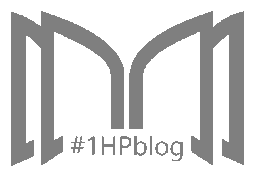A Pause for the Comma
Posted on Jan 25, 2024
In this series, we shine a spotlight on the most unsung heroes of language: punctuation marks. For this part of the series, we’re going to talk about quite a breathtaking mark. Like others, this one gets overlooked a lot, but if not for this particular punctuation mark, we probably would have run out of air. Let’s all take a pause and talk about the comma.
Behind the Mark
We can trace the roots of the comma back to third century BC in a system of single dots that indicated the “amount of breath” one was to take when reading verses aloud. The comma is a mark that is used across different languages and is available in different typefaces.
The comma shares a symbol similar to the apostrophe and the single quotation mark: a small dot with a tail. The difference is in placement because unlike the apostrophe and the single quotation mark, the comma is placed at the bottom of the line.
How to Use It in English
There are several uses for the comma, but generally, the comma has two functions: pauses and linkage. This is because the commas are used to distinguish separate but related ideas.
For one, commas are used to separate items in a list. The use of the comma in lists indicates not only separation but also the link between all the items within the list.
The new subjects include geography, biology, ethnography, and statistics.
Another important use of the comma is to separate clauses. Two dependent clauses may be separated by a comma. This again goes back to the idea that commas are used for distinguishing related ideas.
Ginger wanted to become a doctor, but she also wanted to teach.
Some adverbs also require the use of the comma when they are used. These include therefore, however, nevertheless, and others. Should these adverbs be used in the middle of a sentence, they would have to be preceded and followed by a comma.
Furthermore, studies show that smoking causes harm to both the smoker and anyone inhaling the smoke for cigarettes. It is recommended, therefore, that smoking be banned from public places.
In some cases, commas are used in place of parentheses, as in the case of parenthetical phrases. These phrases contain information that are not necessary to the meaning of the sentence.
Kath’s grandmother, whom she considers her closest relative, will be attending her graduation.
The comma is also a valuable punctuation mark when using vocatives and quotations.
In his speech today, the mayor said, “Students who apply for scholarships will also be eligible to receive a monthly allowance.” And that, Rose, is why you should aim for better grades this semester.
The comma also has plenty of uses outside of grammar. In mathematics, commas are used to separate numerical values. They are also used to separate geographical locations, names, and titles, as well as dates.
There are 525,600 minutes in one year.
I used to live in Nashville, Tennessee.
Today’s keynote speaker is Charles Xavier, PhD.
In speech as well as literature, commas mark a pause (as opposed to the full stop indicated by periods). The comma also retained its original use of marking breaths.
The Oxford Comma
One of the most controversial issues surrounding the comma is its elevated form, the Oxford comma. The Oxford comma is a highly contested and highly polarizing use of the mark. People either feel that it is absolutely necessary or absolutely useless.
The Oxford comma, or the serial comma, is an “optional” comma that comes before the word and on the last item of a list. For cases such as single-word lists, the serial comma may seem unnecessary, such as in the example below.
Popular dog breeds for large families include the Golden Retriever, the Labrador Retriever and the Newfoundland.
However, some lists may be confusing without the extra comma. Read this sentence below to see what I mean.
The lawyer’s clients include a teacher, a newly divorced mom and an accused murderer.
See the problem? Without the Oxford comma, two meanings could be gleaned from the above sentence: the lawyer has three distinct clients, or the lawyer’s client is a teacher, mom, and murderer all in one. Here it is easy to see the importance of the Oxford comma.
As is the case with plenty of rule makers (grammarians and linguists included), one of the aims is to standardize the use of the Oxford comma, making it more than just an option. While practitioners of the language are yet to come to an agreement, for now, the rule of thumb is to follow what the style guide you’re using says about the subject. For example, most academic style guides always require an Oxford comma, but most publication style guides don’t. It all boils down to whom you’re writing for.
Phew! Safe to say, that was more than just a pause. Safe to say, the comma is one punctuation mark that’s sure to pack a punch. We hope you learned plenty today, and we hope you stick around for the rest of 1-Hour Proofreading’s Punctuation Series!
Still unsure about the comma? We’ve got your back! Send your documents through our main page here at 1hourproofreading.com and we’ll make sure to keep all of them in check.
Sources:
About 1-Hour Proofreading
1-Hour Proofreading is a growing start-up offering fast and efficient editing services at a reasonable price with the assurance that the document is publication-ready the soonest you need it. Its team of highly competent professional editors is committed to helping those in need of quality editing services while facing tough deadlines.
Visit 1hourproofreading.com for more details.
Follow us:
Back to Grammary



